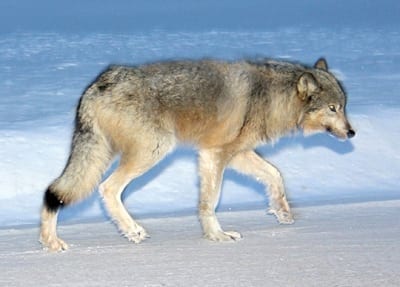A research team hopes to equip dozens of wolves with satellite collars to help support the recovery of caribou herds.
Wildlife biologist Robert Mulders has applied for a permit for the five-year project that would take place on the central barrens between Yellowknife and north to Wekweeti.
The permit application was submitted by the Ministry of Environment and Natural Resources (ENR) to the Wekʼezhii Renewable Resources Board (WRRB).

The project is aimed at supporting the recovery of the Bluenose-East, Bathurst and Beverley/Ahiak caribou herds by putting up to 30 satellite collars on the large canines.
“Wolves are the primary predator of barren-ground caribou. A single wolf can eat 23 to 29 caribou in a year. Information collected from satellite collars, along with biological and statistical analysis, will help us learn more about wolf movements within and between caribou herds, so we can assess the effectiveness of our management actions and adjust them as required,” said Mulders.
To collar the wolves a crew would track the animals in a helicopter and then use a net gun to capture them. A Y-pole would be used to hold the wolf to the ground while the crew removes the net and attaches the collar. No drugs are involved in the process and NWT Wildlife Care Committee animal care and safety guidelines are followed, said Mulder.
A three-member crew of helicopter pilot, net-gunner and ENR handler would undertake the collaring.
The budget for the project wasn't clear because it was not yet known precisely how much flying time would be needed.
“ENR believes 30-50 hours of helicopter time may be required. The satellite collars themselves cost about $3,000 each,” said Mulder.
Collaring is scheduled to happen until the end of April, with 10 collars associated with each of the three herds on their winter ranges.
In case some wolves die or their collars become defective, new animals would be collared between January and April of each year so that 30 animals are consistently monitored.
Though the project is supposed to start on Feb. 15, it is up to the WRRB to decide if and when the permit proposal is approved.